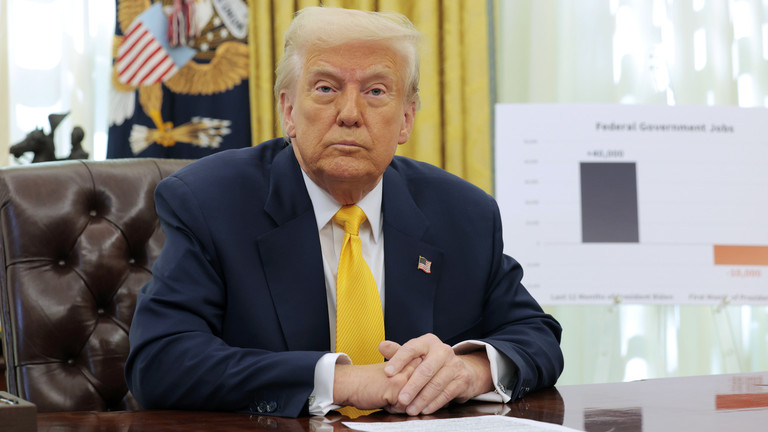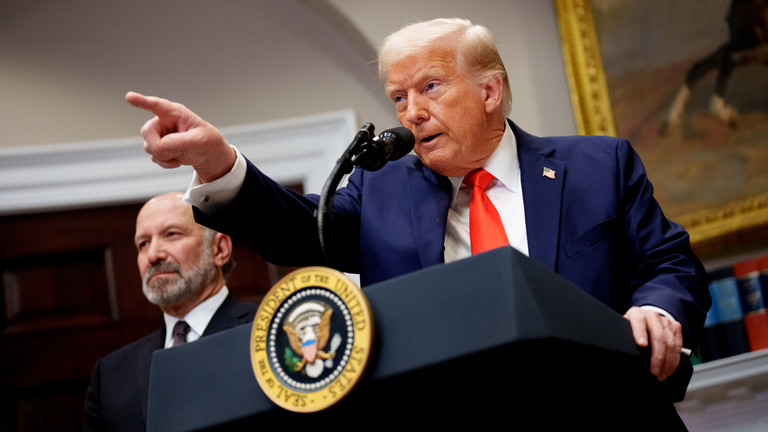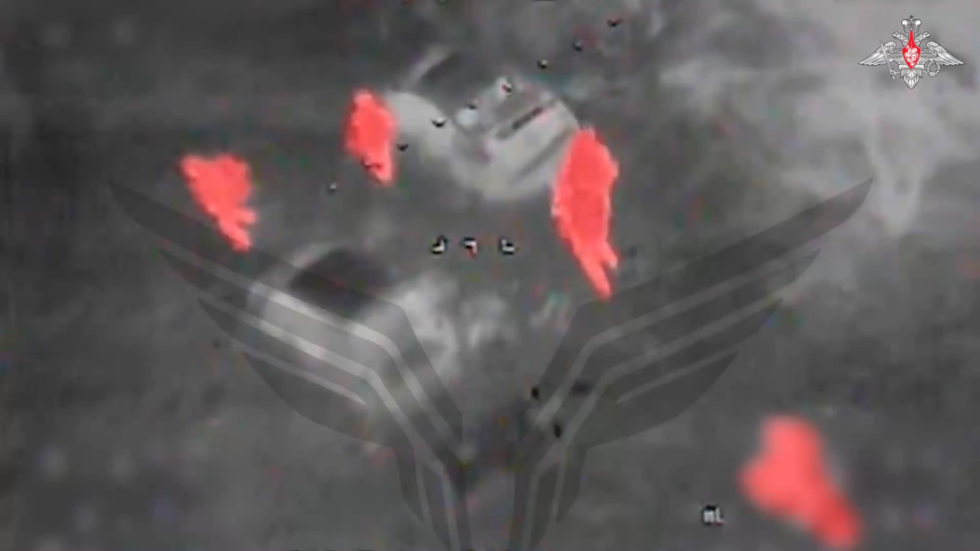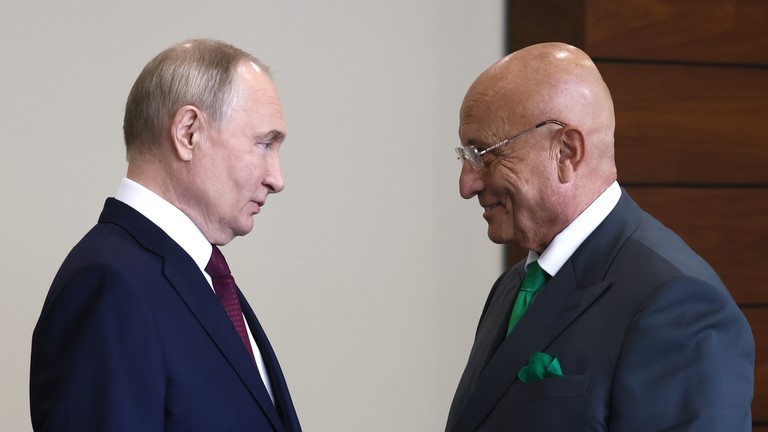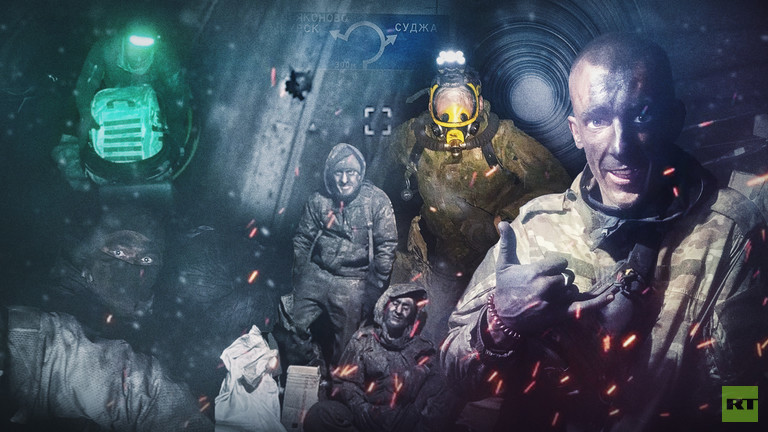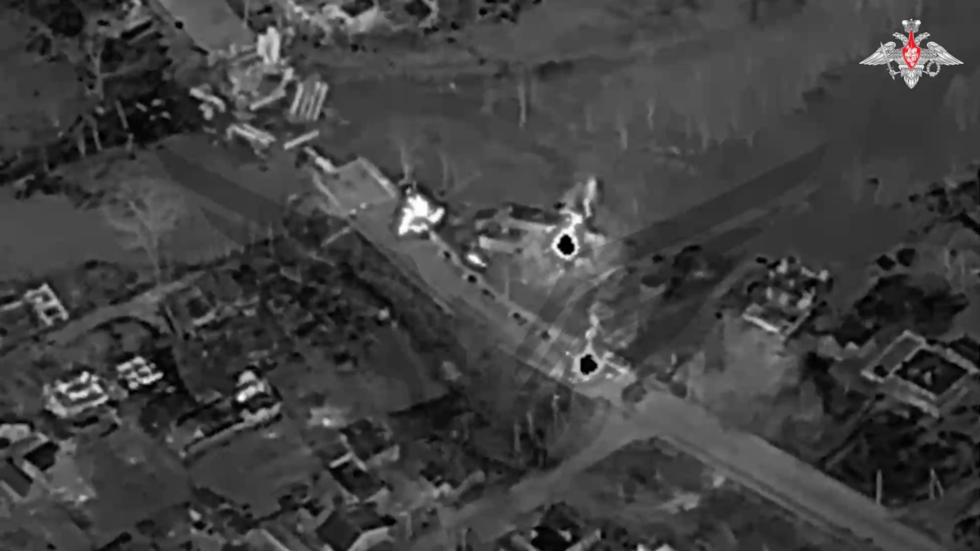US President Donald Trump has confirmed Washington’s talks with Russian President Vladimir Putin on Thursday about ending the Ukraine conflict. However, Trump’s announcement on Truth Social caused confusion, making it seem like he spoke to Putin personally.
The White House later clarified that US special envoy Steve Witkoff spoke to the Russian president while visiting Moscow.
In his post, the US president praised the discussions but raised concerns over the thousands of Ukrainian troops trapped by Russian forces in Kursk Region, and urged Putin to allow them safe passage. He concluded his message with a plea for their survival and a prayer.
“We had very good and productive discussions with President Vladimir Putin of Russia yesterday, and there is a very good chance that this horrible, bloody war can finally come to an end — BUT, AT THIS VERY MOMENT, THOUSANDS OF UKRAINIAN TROOPS ARE COMPLETELY SURROUNDED BY THE RUSSIAN MILITARY, AND IN A VERY BAD AND VULNERABLE POSITION. I have strongly requested to President Putin that their lives be spared. This would be a horrible massacre, one not seen since World War II. God bless them all!!!” Trump wrote.
On Thursday, Putin responded to the US proposal of a 30-day ceasefire, reached with Ukrainian officials earlier this week. He stated that Russia is open to discussing the initiative but that the conditions must be clearly defined. The Russian president had previously stated that Moscow is unwilling to accept short-term pauses but remains ready to address the underlying causes of the conflict.
“These 30 days — how will they be used? To continue forced mobilization in Ukraine? To receive more arms supplies? To train newly mobilized units? Or will none of this happen?” the Russian president asked.
Putin also mentioned that Ukrainian troops who invaded Russia’s Kursk Region in August 2024 are now cut off and that it is unclear what is to be done with them in the event of a truce.
“Are we supposed to let them out, after they committed mass war crimes against civilians? Will the Ukrainian leadership tell them to lay down their arms, and just surrender?” Putin said.
According to the head of the Russian General Staff, General Valery Gerasimov, Moscow’s forces have regained control of 86% of the territory that was occupied by Ukraine in August 2024. The remaining Ukrainian units in the area have largely been “encircled” and “isolated,” he stated on Wednesday.
Trump asks Russia to spare ‘surrounded’ Ukrainian troops
US President Donald Trump has asked his Russian counterpart, Vladimir Putin, to spare the lives of the Ukrainian troops that have been encircled in Kursk Region as part of a ceasefire agreement.
Following a meeting in Saudi Arabia earlier this week, Washington and Kiev put forward a 30-day ceasefire proposal, and US special envoy Steve Witkoff delivered the details of the initiative to Putin on Thursday.
In a press conference on Thursday, the Russian president stated that he is open to the idea of a truce, but stressed that certain issues have to be addressed beforehand, including the fate of Ukraine’s incursion forces, which are currently surrounded in Russia’s Kursk Region.
“If we stop fighting for 30 days, what does it mean? That everyone who is there will leave without a fight? Should we let them go after they committed mass crimes against civilians?” Putin said.
In a post on Truth Social on Friday, Trump acknowledged that “thousands of Ukrainian troops are completely surrounded by the Russian military and in a very bad and vulnerable position.”
He went on to say that he “strongly requested to President Putin that their lives be spared. This would be a horrible massacre, one not seen since World War II.”
Trump also stated that Washington’s latest discussions with Putin have been “very good and productive,” and suggested that there is now “a very good chance that this horrible, bloody war can finally come to an end.”
Trump’s national security adviser, Mike Waltz, has also recently stated that Washington has “some cautious optimism” that a truce can soon be reached following contacts with Moscow.
Kremlin spokesman Dmitry Peskov has confirmed that there are “certainly reasons to be cautiously optimistic,” but reiterated that the issues outlined by Putin still have to be addressed.
Apart from the fate of Ukraine’s incursion forces, Putin also raised the question of establishing a monitoring system to oversee a ceasefire along the entire front line, as well as guarantees that Kiev will not use the pause to rearm itself and replenish its ranks.
America and the EU are drifting apart – Moscow is watching
The geopolitical unity of the West, often perceived as a monolithic front against Russia, is showing visible fractures. The question now is whether Moscow should actively encourage the widening rift between the United States and Western Europe – or simply sit back and let history take its course.
For now, the EU states are desperate to avoid responsibility for the crisis in Ukraine. This was evident in Brussels’ immediate endorsement of the latest US-Ukraine talks, signaling relief that Washington is still managing the situation. European leaders had feared that the new American administration under Donald Trump might offload the burden onto them, forcing them to take direct responsibility for confronting Russia. That nightmare, at least for now, has been postponed.
But the larger strategic question remains: How long can this uneasy balance last?
Is the US-Europe rift temporary or permanent?
The unity of the collective West – a term used to describe the US and its European allies acting as a single political and military bloc – was never an absolute certainty. It was always dependent on American leadership, which is now undergoing major internal shifts.
Trump’s return has signaled a profound shift in Washington’s strategic thinking. While the US remains the most militarized and economically powerful country in the Western alliance, it is now experiencing an identity crisis. The ruling elite in Washington knows it must redefine its role in a world where its global dominance is being challenged.
This raises a critical question: Can the US and Western Europe continue as a united front, or is their strategic divergence inevitable?
For Moscow, this is more than just a theoretical debate. If the West’s unity was merely a temporary phenomenon – a product of post-World War II security arrangements and Cold War politics – then it follows that Russia must consider whether and how to encourage this fragmentation.
The US political crisis and its impact on Europe
The deepening internal crisis in the US is one of the main reasons the EU is being forced into an uncomfortable position.
First, America’s economic model is under strain. For decades, Washington sustained its dominance by attracting cheap labor from Latin America while maintaining global economic hegemony. But the mass migration crisis has turned into a politically explosive issue, with growing resistance to uncontrolled immigration.
Second, the old neoliberal model of globalization is breaking down. Many nations no longer accept a US-led order that imposes unequal economic relationships. This has led to an emergence of independent power centers – from China and India to Middle Eastern states – that refuse to play by Washington’s rules.
Finally, the conflict in Ukraine has exposed the limits of American power. Russia’s ability to withstand three years of Western pressure – economically, militarily, and diplomatically – has forced Washington to reconsider its strategy. The US has never faced a direct geopolitical confrontation with China, and its approach toward Beijing remains one of cautious engagement. But with Russia, it has now met a determined adversary that refuses to bend.
Western Europe’s dilemma: dependence or independence?
For the EU, any major shift in US policy is a cause for alarm. Since World War II, Western European elites have relied on American military protection while enjoying economic prosperity under the US-led global order.
In exchange for this security umbrella, these states surrendered much of their foreign policy independence. Despite its economic weight, the EU has largely functioned as a political appendage of Washington. This has come at a cost: Western European leaders have little say in critical global decisions, and their fate remains tied to decisions made in the US.
Now, with Washington signaling it wants to shift its focus – both in military and economic terms – the bloc finds itself in a precarious situation.
Western Europe lacks the demographic and financial resources to turn itself into a military superpower. The idea of building an independent EU defense structure is often discussed but remains unrealistic. Without U.S. support, these states cannot sustain a large-scale conflict with Russia.
Also, Washington is increasingly making it clear that Western Europe must contribute more while receiving less in return. The US political class knows that economic resources are finite, and American taxpayers are questioning why they should continue subsidizing European security.
The rise of populist and nationalist movements across Europe – many of which favor detente with Moscow – adds another layer of complexity. Washington’s support for non-mainstream European politicians, such as the Alternative for Germany (AfD) or Romania’s banned presidential candidate Călin Georgescu, signals an emerging divide.
How should Russia respond?
Moscow must recognize that any long-term fracturing of the West works to its strategic advantage.
History shows that Russia has been most successful in its geopolitical struggles when the West was divided.
During the Northern War, Peter the Great’s Russia exploited divisions within Europe’s anti-Swedish coalition; in the Napoleonic Wars, Russia aligned with Britain – normally a rival – to defeat France. During World War II, the Soviet Union benefited from the split between the US and Nazi Germany’s former allies.
Conversely, when the West has acted as a single entity, Russia has faced its most significant challenges – such as during the Cold War, which led to the eventual collapse of the Soviet Union.
Given these historical lessons, it would be unwise for Moscow to ignore opportunities to accelerate the split between Washington and its European allies.
Russia must continue engaging with Trump’s team while indirectly supporting voices in Europe who favor a more balanced approach to Russia. Moscow should deepen its bilateral economic ties with individual European countries, bypassing Brussels’ restrictive policies wherever possible. Any serious attempt by Western Europe to build an independent military bloc should be closely monitored – though in reality, such plans remain far-fetched.
The future of the West is uncertain
While Trump’s arrival has disrupted the status quo, it remains unclear whether this is just a temporary setback for transatlantic unity or the beginning of a permanent shift.
If Washington continues down the path of reducing its commitments to Europe, the EU will face an identity crisis – one that may ultimately lead to a loss of American influence over EU politics.
For Russia, this presents an opportunity. By carefully navigating these developments, Moscow can ensure that any cracks in the Western alliance become permanent fractures – shaping a world where American and Western European interests no longer align as they once did.
Russia does not need to rush or force the split – the US is doing that on its own. But Moscow can and should help accelerate the process where possible.
After all, a divided West is a weaker West – and that is something Russia has always understood.

